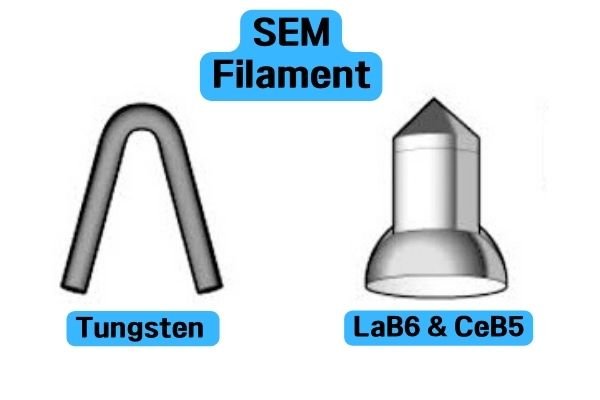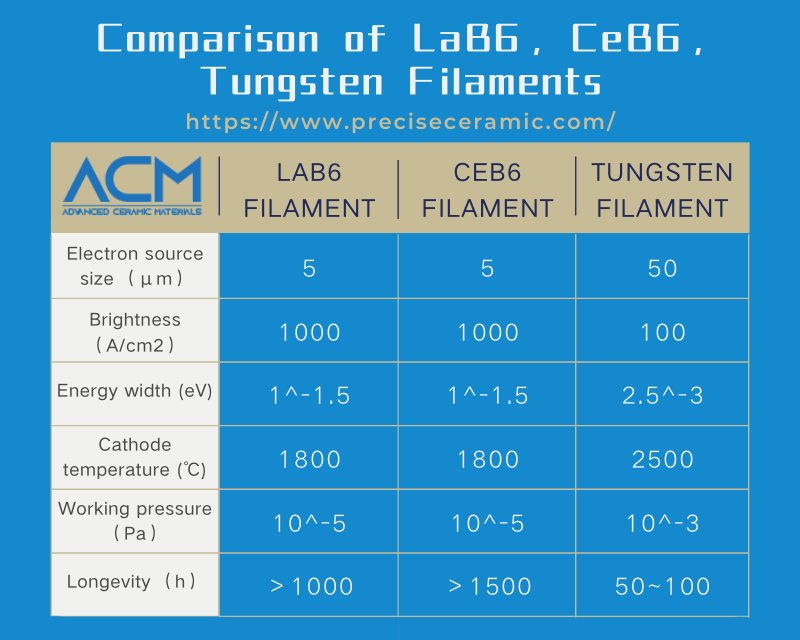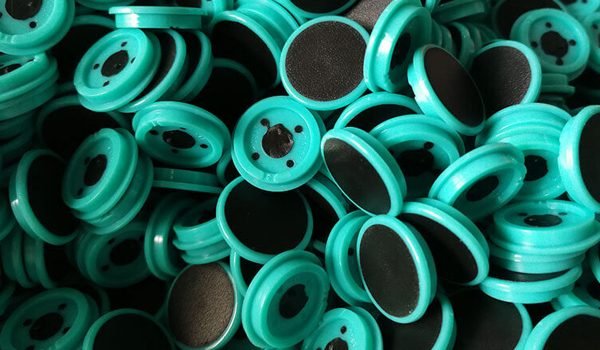The filament of the scanning electron microscope (SEM) determines the resolution, imaging contrast and signal-to-noise ratio of the electron microscope image. Three commonly used filament materials for SEM are: LaB6 filament, CeB6 filament, and tungsten filament. This article will compare these three materials from 6 aspects.

Table of Contents
Electron source size
The electron source size refers to the electron beam spot formed after the electrons emitted by the electron gun are converged by Webster’s cap. The electron source size for lanthanum hexaboride and cerium hexaboride filaments is about 5 μm, which is significantly smaller than that for tungsten filaments (about 50 μm). Therefore, LaB6 and CeB6 filaments are more conducive to forming a smaller electron beam spot after being converged by the condenser and the objective lens, so that the scanning electron microscope can obtain better resolution.
Brightness
The brightness is the electron current intensity per unit area of the filament. The higher the brightness, the more favorable the electron microscope is to obtain more sufficient signals and improve the signal-to-noise ratio and clarity of the picture. Lanthanum hexaboride and cerium hexaboride filaments are 10 times brighter (about 1000A/cm2) than tungsten filaments (about 100A/cm2), so LaB6 and CeB6 filaments can make electron microscopes get better SNR pictures.
Energy width
The energy width represents the monochromaticity of the electrons emitted by the filament. The smaller the value, the better the monochromaticity of the electrons emitted by the filament, and the more concentrated the energy, which helps to reduce the chromatic aberration of the lens and form a smaller beam spot. Increase the resolution. The electrons emitted from the lanthanum hexaboride and cerium hexaboride filaments are more monochromatic and have higher resolution.
Cathode temperature
The cathode temperature is also the working temperature of the filament. The lower the working temperature, the slower the volatilization of the filament and the longer the life. The operating temperature of lanthanum hexaboride cathode and cerium hexaboride cathode is about 1800°C, which is much lower than 2500°C of tungsten filaments, so their lifespans are much longer than tungsten filaments.
Working pressure
The working pressure is the vacuum degree required for the normal operation of the filament. The vacuum degree required by the lanthanum hexaboride and cerium hexaboride filaments is both 10-5Pa, which is higher than the 10-3Pa of the tungsten filament, so their requirements for the vacuum system are also will be higher.
Longevity
Longevity is the normal use time of the filament. Since the life of the tungsten filament is only 50-100h, the electron microscope using the tungsten filament as the electron source needs to replace the filament frequently. Electron microscopes using lanthanum hexaboride and cerium hexaboride filaments do not require frequent filament replacement.

Conclusion
To sum up, the scanning electron microscope using LaB6 filament and CeB6 filament has better image resolution and signal-to-noise ratio than the desktop electron microscope using ordinary tungsten filament, and the filament life is longer, and the filament does not need to be replaced frequently.





